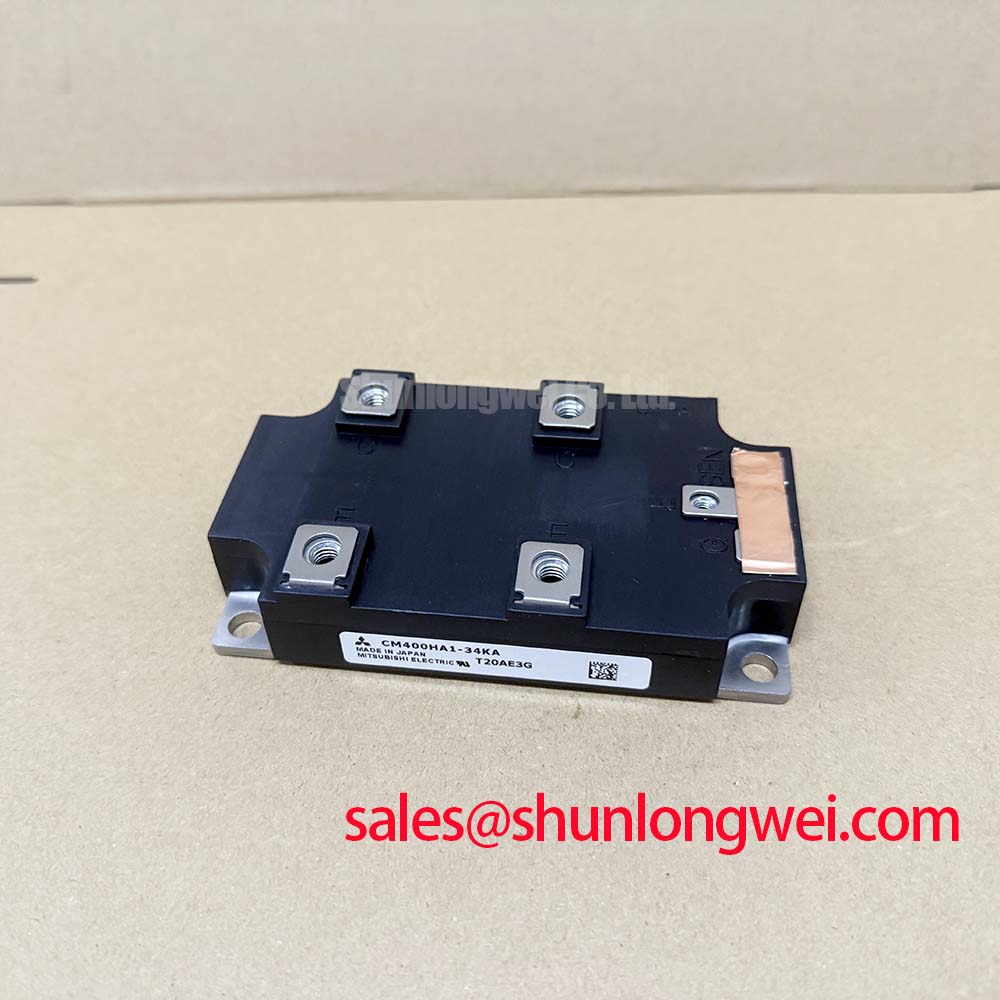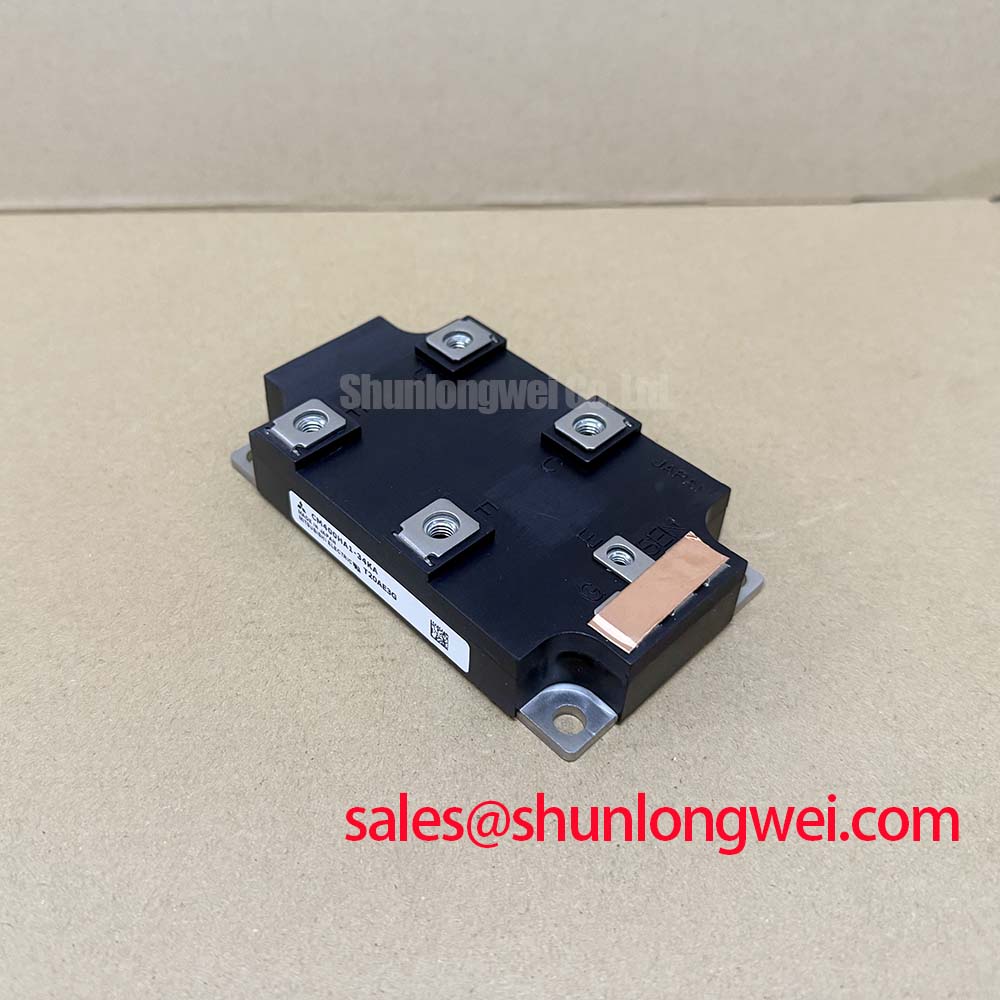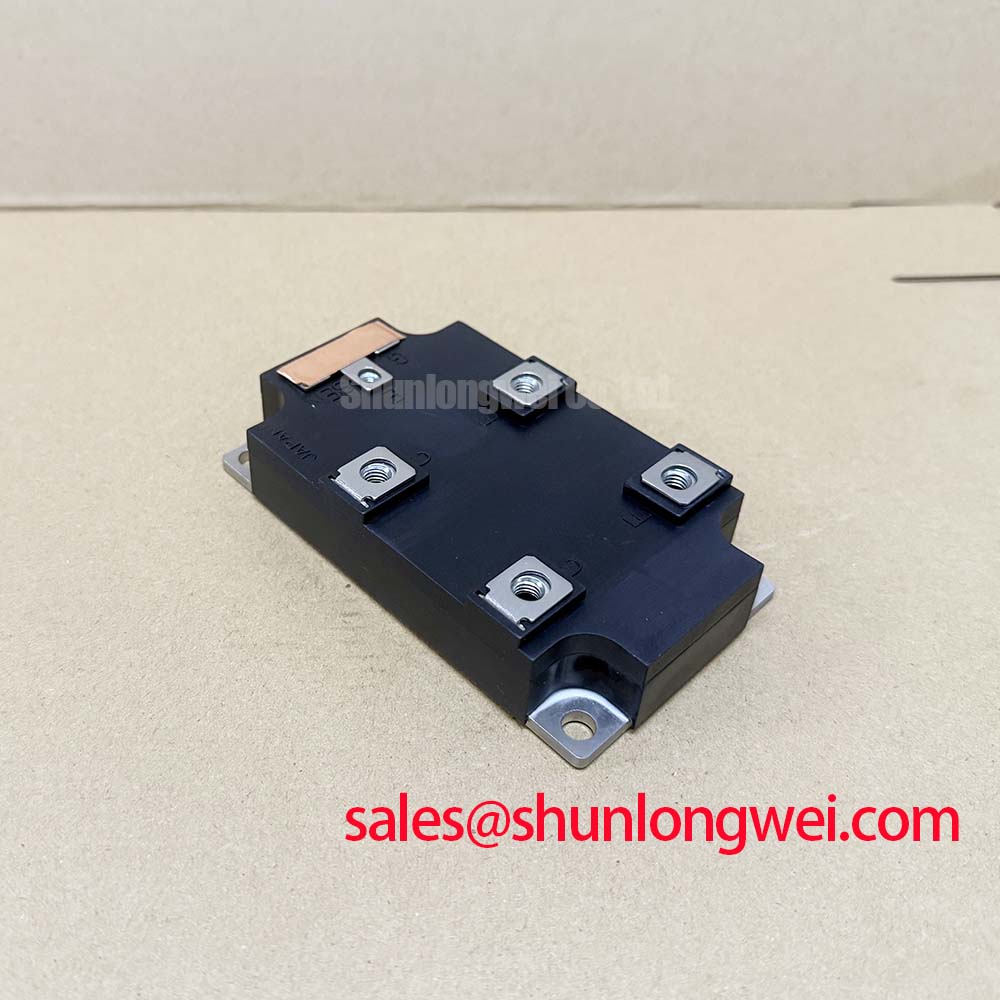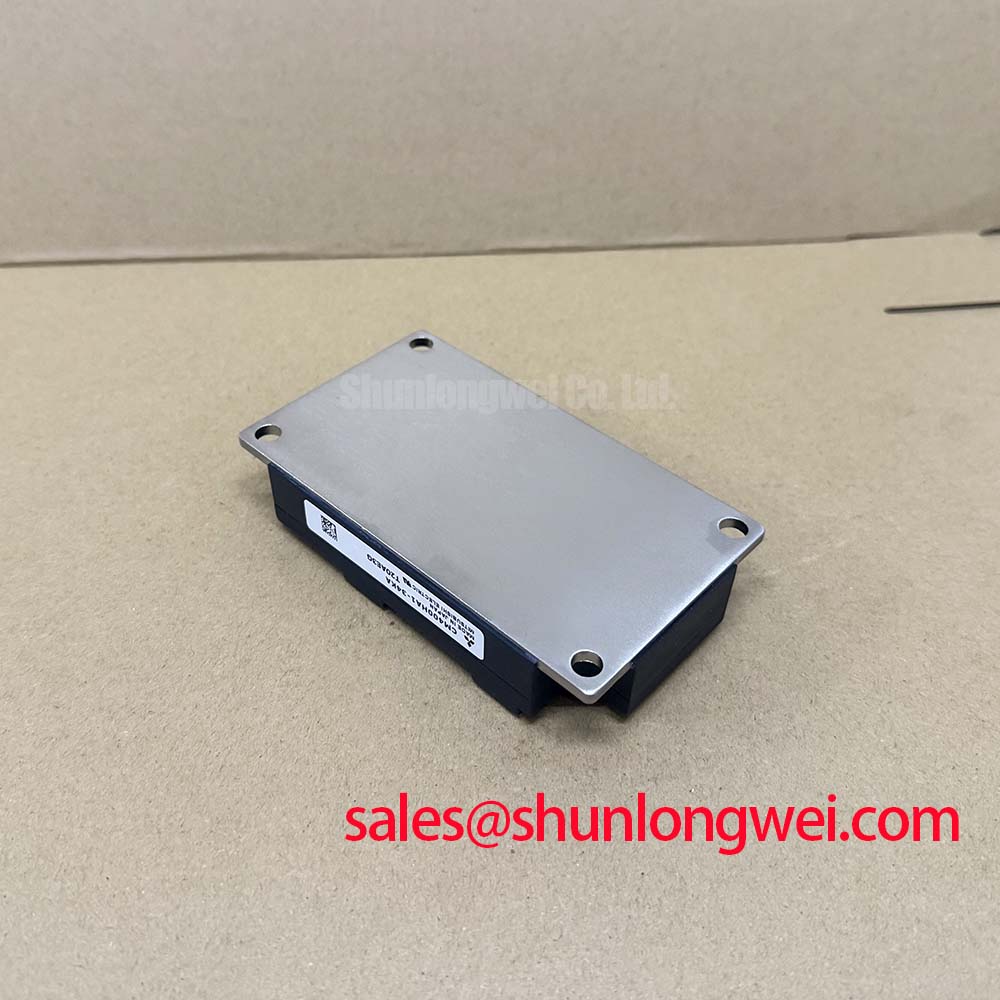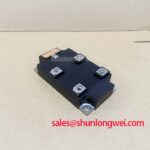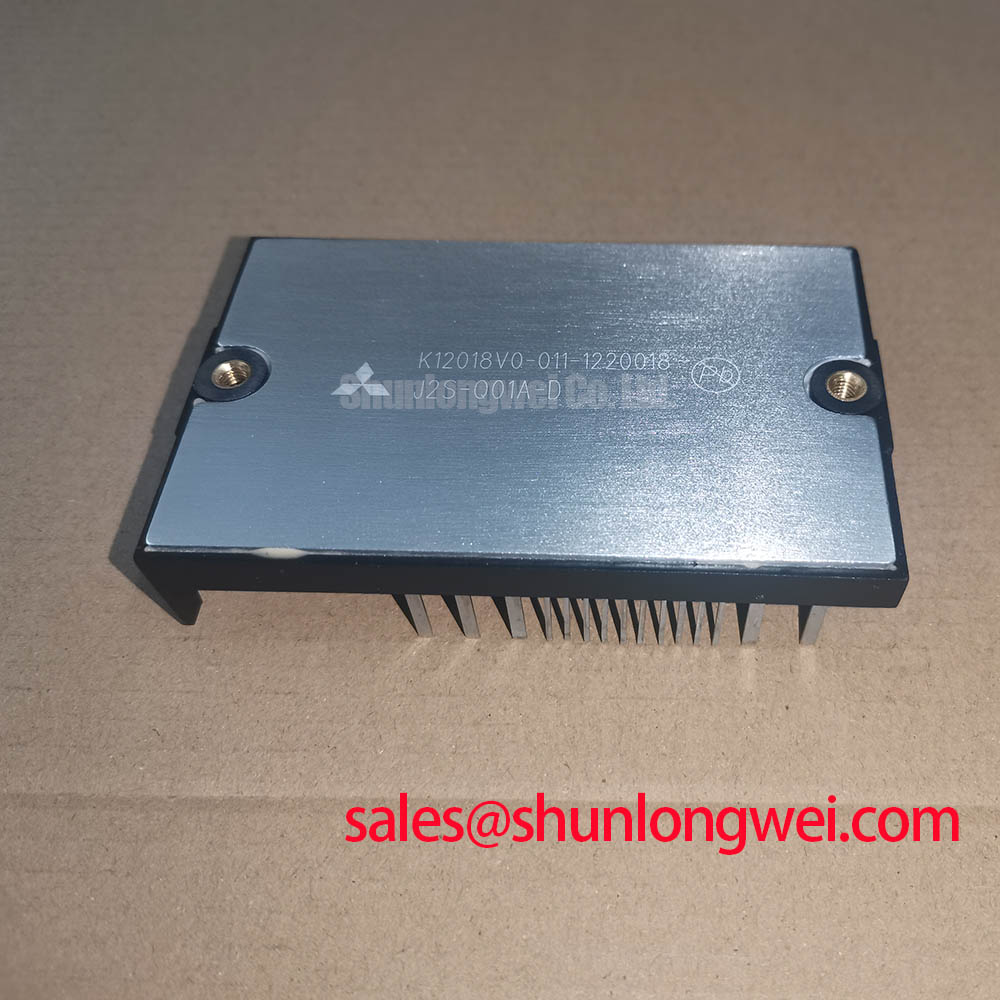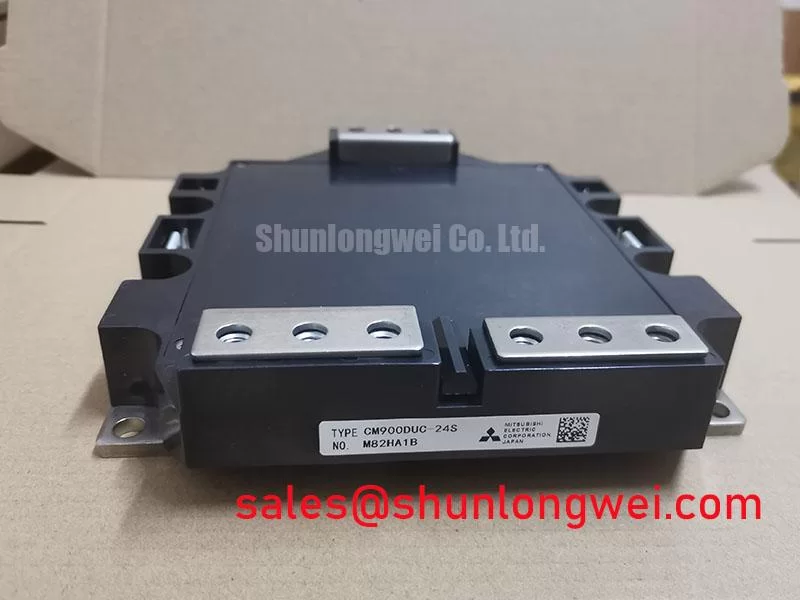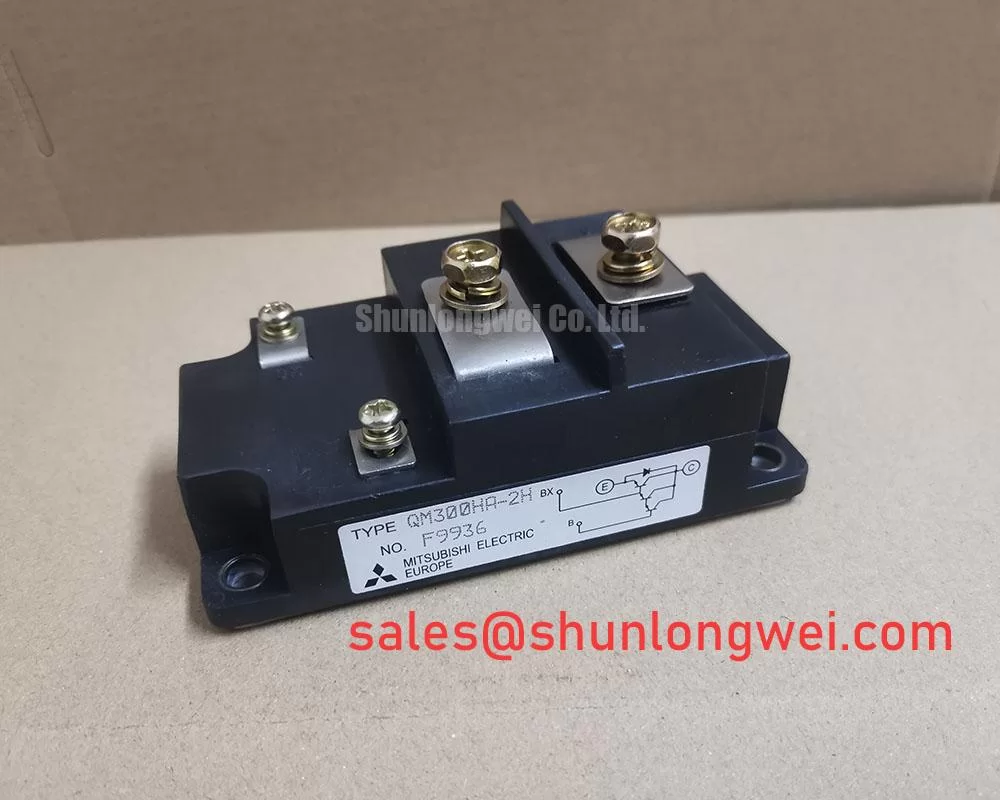Content last revised on November 15, 2025
CM400HA1-34KA IGBT Module: High-Efficiency Power Switching
Technical Deep Dive: The CM400HA1-34KA for Low-Loss Power Conversion
The Mitsubishi CM400HA1-34KA is a single-element IGBT module engineered to minimize losses in high-power switching circuits, delivering optimized energy conversion. At its core, this H-Series module addresses the fundamental engineering challenge of balancing voltage blocking capability with on-state and switching efficiency. Its design is centered on providing a low collector-emitter saturation voltage (VCE(sat)), which directly translates to reduced conduction losses—a critical factor in the thermal management and overall efficiency of power systems. How does it achieve this? By leveraging advanced chip technology that ensures current flows with minimal resistance, thereby reducing the heat generated and maximizing the power delivered to the load.
Top Specs: 1700V | 400A | VCE(sat) 2.7V typ.
Key Benefits:
- Minimized conduction power loss
- Enhanced system thermal stability
Proven Performance in High-Demand Conversion
While specific deployment case studies are proprietary, the operational profile of the CM400HA1-34KA makes it an excellent component for upgrading legacy industrial systems. Consider a scenario involving a 150 kW-class variable frequency drive (VFD) operating on a 690V AC line. Replacing an older, less efficient power module with the CM400HA1-34KA can lead to tangible improvements. The lower VCE(sat) immediately reduces static power dissipation, allowing for either a reduction in heatsink size for a more compact design or increased operational thermal margin for greater long-term reliability. This enhancement contributes directly to a lower total cost of ownership through energy savings and improved system longevity.
CM400HA1-34KA: Key Performance Specifications
The technical parameters of the CM400HA1-34KA are foundational to its performance in demanding power electronics applications. The following tables outline the key electrical and thermal characteristics based on the official manufacturer's documentation. For comprehensive schematic diagrams, performance curves, and application notes, please refer to the product datasheet.
Absolute Maximum Ratings (Tj = 25°C unless otherwise specified)
| Parameter | Symbol | Conditions | Rating | Unit |
|---|---|---|---|---|
| Collector-Emitter Voltage | VCES | VGE = 0V | 1700 | V |
| Gate-Emitter Voltage | VGES | VCE = 0V | ±20 | V |
| Collector Current | IC | Tc = 25°C | 400 | A |
| Collector Current (Peak) | ICP | Tc = 25°C, 1ms | 800 | A |
| Collector Power Dissipation | PC | Tc = 25°C | 2770 | W |
| Operating Junction Temperature | Tj | - | -40 to +150 | °C |
Electrical Characteristics (Tj = 25°C unless otherwise specified)
| Parameter | Symbol | Conditions | Min | Typ | Max | Unit |
|---|---|---|---|---|---|---|
| Collector-Emitter Saturation Voltage | VCE(sat) | IC = 400A, VGE = 15V | - | 2.70 | 3.30 | V |
| Gate-Emitter Leakage Current | IGES | VGE = ±20V, VCE = 0V | - | - | 0.5 | µA |
| Collector-Emitter Cutoff Current | ICES | VCE = VCES, VGE = 0V | - | - | 1.0 | mA |
| Gate-Emitter Threshold Voltage | VGE(th) | IC = 40mA, VCE = 10V | 5.5 | 7.0 | 8.5 | V |
Meeting Tomorrow's Efficiency Standards Today
The drive for greater energy efficiency is reshaping industrial and commercial power systems. Regulations and market demands push for higher performance and lower operational expenditure. The Mitsubishi CM400HA1-34KA is well-positioned to meet these challenges. Its 1700V rating provides a substantial safety margin for systems connected to 690V industrial grids, a common standard in heavy industry. Furthermore, its focus on reducing on-state losses aligns with the goals of developing more sustainable and cost-effective Variable Frequency Drives (VFDs), uninterruptible power supplies, and renewable energy converters. By integrating such efficient components, designers can achieve higher power density, reduce system cooling requirements, and contribute to overall energy conservation targets.
Engineering Analysis: The Core of Low-Loss Switching
A deeper look into the CM400HA1-34KA reveals a focus on minimizing the two primary sources of energy loss in an IGBT: conduction and switching losses. The key to its performance lies in its electrical characteristics.
- Low Conduction Loss (VCE(sat)): The Collector-Emitter Saturation Voltage, VCE(sat), is a critical parameter. Think of it as the small voltage drop, or "toll," that occurs when the IGBT is fully on. The CM400HA1-34KA's typical VCE(sat) of 2.7V at its nominal 400A rating is a testament to its efficient design. A lower VCE(sat) means less power is wasted as heat (P_loss = VCE(sat) * IC), leading directly to higher overall system efficiency and easing the burden on thermal management systems. For engineers decoding IGBT datasheets, this parameter is a primary indicator of performance in steady-state operation.
- Robust Voltage Blocking (VCES): The 1700V collector-emitter voltage rating (VCES) provides a significant safety margin for high-voltage applications, particularly those operating on 690V AC lines where voltage spikes are common. This robustness ensures reliable operation under transient overvoltage conditions, a crucial aspect of long-term system dependability.
A Data-Centric View for System Design
When evaluating power modules, a direct comparison of datasheet values provides objective data for design decisions. The CM400HA1-34KA distinguishes itself within the 1700V class through a balanced set of characteristics. While some modules may offer slightly faster switching speeds, they often do so at the cost of a higher VCE(sat). The H-Series technology in this module provides an optimized trade-off, making it a strong candidate for applications where conduction losses are the dominant factor in the total loss budget, such as in motor drives that operate at lower to moderate switching frequencies. For systems demanding higher power density or simplified thermal design, the CM600DX-24T offers a dual-IGBT configuration with a higher current rating in a different package format.
Powering High-Efficiency Industrial Systems
The carefully engineered specifications of the CM400HA1-34KA make it suitable for a range of high-power conversion applications where efficiency and reliability are paramount.
- Industrial Motor Drives: In large VFDs and servo drives for manufacturing and automation, the module's ability to handle high currents with low conduction losses translates directly into energy savings and more precise motor control.
- Uninterruptible Power Supplies (UPS): For data centers and critical infrastructure, the reliability afforded by the 1700V rating and the efficiency gains from low VCE(sat) ensure minimal energy waste and dependable backup power.
- Renewable Energy Systems: The module can be a key component in the inverter stages of solar and wind power generation systems, efficiently converting DC power from renewable sources into grid-ready AC power.
- Welding Power Supplies: The module's robust current handling capabilities are essential for the high-power switching required in advanced industrial welding equipment.
What is the main advantage of its single-element design? It provides layout flexibility for custom inverter topologies and paralleling arrangements.
For high-frequency industrial drives where switching losses are the primary concern, the module’s performance characteristics make it an optimal choice over standard 1200V alternatives that offer less voltage headroom.
Technical Inquiries for the CM400HA1-34KA
How does the VCE(sat) of the CM400HA1-34KA contribute to lower system operating costs?
A low VCE(sat) directly reduces conduction power loss (P = VCE(sat) × IC). Over the lifetime of a system, especially in continuous-duty applications like motor drives or UPS, this reduction in wasted energy translates into significant electricity cost savings. It also reduces the heat generated, potentially allowing for a smaller, less expensive cooling system and improving the overall reliability of the unit, further lowering maintenance and replacement costs.
What is the significance of the 1700V VCES rating for this module?
The 1700V rating provides a crucial safety margin, particularly for power converters operating from a 690V AC industrial bus. This higher blocking voltage capability makes the system more resilient to transient voltage spikes caused by line disturbances or inductive switching, enhancing the reliability and longevity of the application. It offers a more robust solution compared to standard 1200V modules in these environments.
What are the key considerations for the gate drive circuit design for this module to ensure optimal switching?
To achieve optimal performance, the gate drive circuit should provide a clean, sharp turn-on voltage (typically +15V) and a negative turn-off voltage (e.g., -5V to -15V) to prevent parasitic turn-on under high dV/dt conditions. The gate resistor (Rg) must be carefully selected to balance switching speed and voltage overshoot. A smaller Rg speeds up switching but can increase EMI and voltage stress. For a deeper understanding of IGBT characteristics, explore this in-depth analysis of IGBT modules.
Design and Evaluation Support
To fully evaluate the CM400HA1-34KA for your specific application, it is essential to consult the official datasheet. This document provides detailed performance graphs, thermal impedance data, and safe operating area (SOA) curves that are critical for robust and reliable system design. Careful review of these resources will enable you to optimize your thermal management strategy and gate drive circuitry to maximize the efficiency and longevity of your power conversion system.

